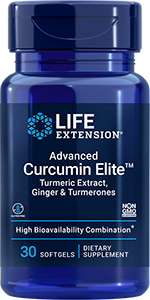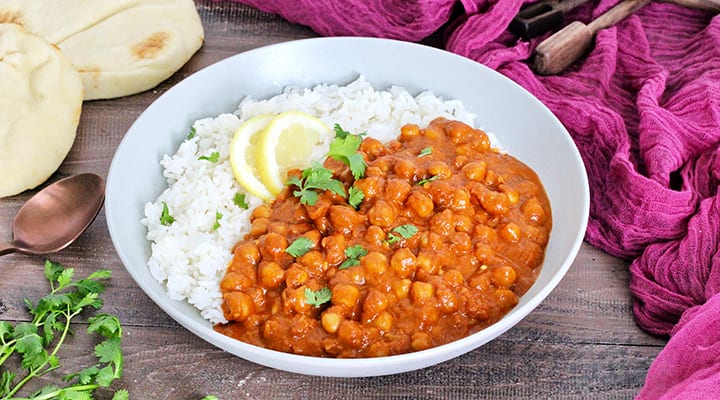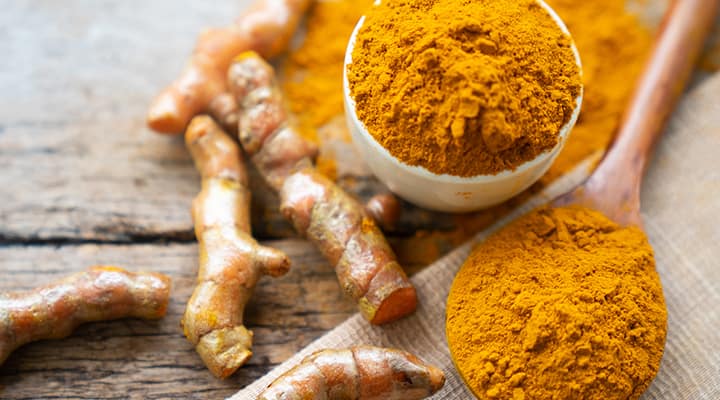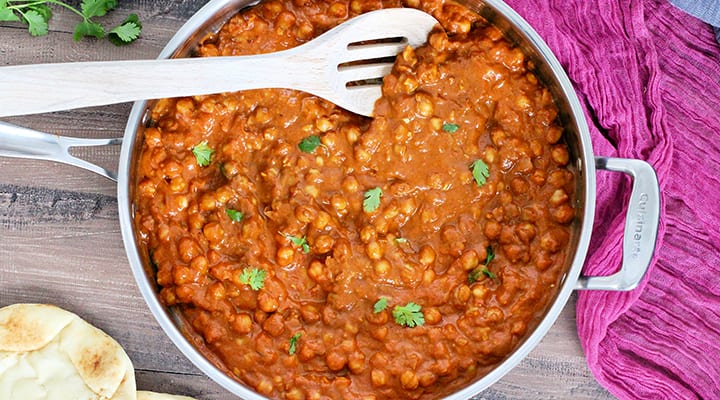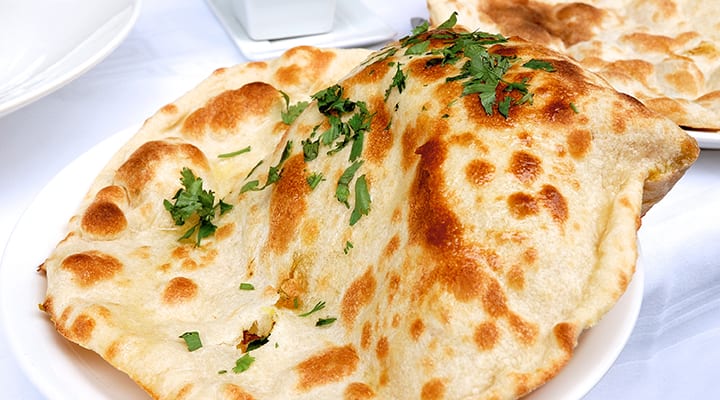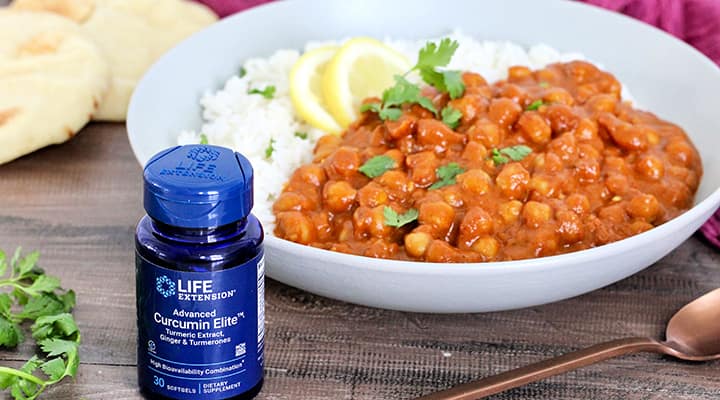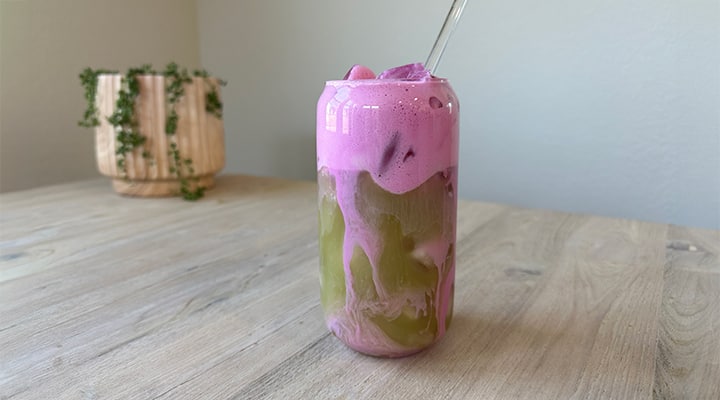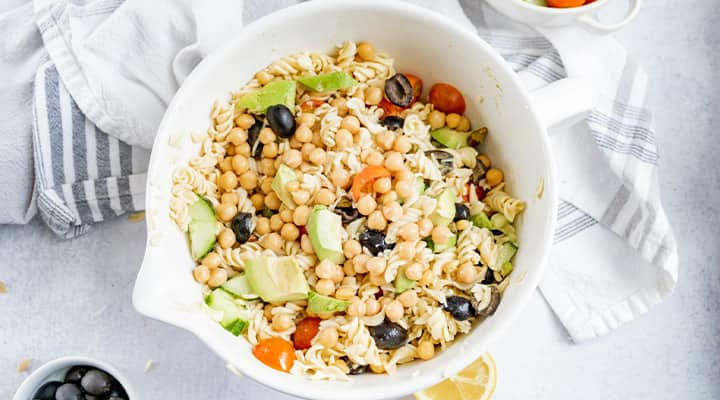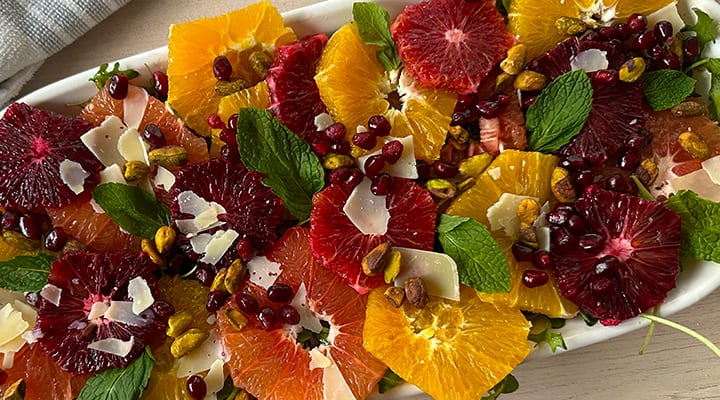
Chickpea Curry: Healthy and Delicious Indian Cuisine
Published: September 2023
Chickpea curry is not just about taste; this mouthwatering Indian dish is also a nutritional powerhouse. Chickpeas have been a dietary staple for centuries, enjoyed in cuisines all around the world. These little legumes are bursting with plant-based protein, fiber and essential nutrients.
The addition of spices like turmeric, with its active component curcumin, adds more than just color to this dish—it brings a wealth of antioxidant activity and other health benefits.
So get ready to savor a curry recipe that's as good for your taste buds as it is for your health.
What is chickpea curry?
Chickpea curry is a delicious and wholesome Indian dish that's flavorful and comforting. Picture tender chickpeas simmered in a tomato-based sauce, infused with warm spices like turmeric, cumin and ginger. Coconut milk adds a creamy richness to the dish that nicely balances the spices and gives the curry a luxurious texture.
The star of this tasty dish is the humble chickpea. Chickpeas, also known as garbanzo beans, come from the plant family of legumes. They have a mild, nutty flavor that makes them incredibly versatile, pairing well with a wide variety of seasonings and spices. They can be used in a multitude of dishes, from vibrant salads, hearty stews, and flavorful Indian-inspired curries, to cherished classics like hummus and falafel. You can even roast chickpeas and enjoy them as a healthy snack.
Although its flavors are complex, this easy chickpea curry is surprisingly simple to make at home. With just a handful of healthy, budget-friendly ingredients and a blend of aromatic spices, you can whip up this hearty and nutritious coconut chickpea curry for a special event or weeknight dinner.
Is chickpea curry healthy?
Yes! Chickpea curry is a nutrient-dense and high-protein dish that can contribute to your overall health and well-being. That's why you'll find chickpeas and other legumes in two key healthy eating strategies recommended by many physicians: the Mediterranean diet and the MIND diet (Mediterranean-DASH Intervention for Neurodegenerative Delay), which emphasizes foods that have been shown to encourage brain and cognitive health.
Chickpeas are packed with plant-based protein, fiber, complex carbohydrates, vitamins and minerals. One cup of cooked chickpeas contains almost 15 grams of protein, which is essential for supporting muscle maintenance and growth. Additionally, chickpeas are rich in dietary fiber, which plays a crucial role in promoting digestion, maintaining a healthy gut and managing your appetite. Fiber supports already-healthy blood sugar levels and can also promote healthy cholesterol levels and heart health.
In addition, chickpeas are brimming with essential vitamins like folate, vitamin K and vitamin B6, as well as minerals including iron, magnesium and potassium. They're also rich in the amino acid arginine, which can help boost nitric oxide levels (which in turn has heart health benefits).
The vibrant medley of spices found in chickpea curry contributes to its benefits. Turmeric in particular has been used by humans for centuries. It contains curcumin, an active compound with a wide array of health benefits.
The use of coconut milk keeps this recipe dairy-free, and it is nut-free as well. That makes this curry recipe an excellent choice for vegetarians, vegans, or anyone trying to follow a flexitarian diet.
What does curcumin do?
Curcumin is a popular dietary supplement because it helps inhibit inflammation to promote joint health and organ health, including heart health. It also encourages a healthy inflammatory response and supports immune system health.
In preclinical research, curcumin has shown promise for your mind, such as supporting healthy brain function and offering neuro-protective benefits. Research also suggests curcumin may help promote healthy bowel function and pancreatic function.
One reason for curcumin's many benefits is its powerful antioxidant activity, which provides cellular protection against the harmful free radicals that lead to oxidative stress. Antioxidants like curcumin can help reduce oxidative stress in the body and counteract its negative effects.
Healthy Chickpea Curry Recipe
You can capture some of the benefits of the compounds in turmeric with this easy coconut chickpea curry. This one-pot curry can be assembled in a total time of about 30 minutes, and it makes 6 servings.
Ingredients
2 tablespoons olive oil
1 medium yellow onion, finely chopped
2 cloves garlic, finely chopped
1 tablespoon curry powder
1 (14.5 oz) can crushed tomatoes
2 (14.5 oz) cans low-sodium chickpeas, drained and rinsed
1 (13.5 oz) can coconut milk
1 teaspoon kosher salt
½ teaspoon black pepper
2 teaspoons garam masala
2 teaspoons lemon juice
½ teaspoon sugar or honey
Fresh cilantro leaves, for garnish
Step-by-step preparation
- Heat the oil in a large sauté pan over medium heat and add the onion. Cook until onion is softened and golden brown (5-6 minutes). Add the garlic and curry powder and stir to combine with the onion. Cook 1-2 minutes on medium heat to toast the spices.
- Add the crushed tomatoes and gently scrape the bottom of the pan with a wooden spoon to release any browned onion or spices stuck to the bottom.
- Add the chickpeas, coconut milk, salt and black pepper. Bring to a boil over medium-high heat, then reduce the heat and simmer on low for 10 minutes until the chickpeas are softened and the sauce is thickened. If desired, mash some of the chickpeas with the back of a spoon to thicken the curry.
- Stir in the garam masala, lemon juice and sugar and simmer for another 2-3 minutes. Taste and adjust the seasoning as needed.
- Serve this curry with basmati rice or brown rice and/or naan bread. Garnish with fresh cilantro.
Nutritional values
Calories: 330
Carbohydrates: 29 g
Protein: 10 g
Fat: 21 g
Saturated Fat: 13 g
Polyunsaturated Fat: 2 g
Monounsaturated Fat: 5 g
Sodium: 882 mg
Potassium: 593 mg
Fiber: 8 g
Sugar: 4 g
Vitamin A: 179 IU
Vitamin C: 10 mg
Calcium: 96 mg
Iron: 5 mg
All nutritional information is based on third party calculations and is only an estimate. Each recipe and nutritional value will vary depending on the brands you use, measuring methods and portion sizes.
Tips For Success
- Curry powder is not just one spice. Rather, it's a blend of dried spices and herbs commonly used in South Asian cuisine. The specific ingredients in curry powder can vary widely, but it typically includes a mixture of spices such as turmeric, coriander, cumin, fenugreek and chili peppers. Curry powder can range from mild to hot, depending on the blend.
- Garam masala is a popular spice blend used in South Asian cuisine. It has a warm flavor profile and typically includes spices like cinnamon, cardamom, cloves, cumin and coriander. It's added near the end of the cooking process to enhance the flavor of a dish. You can find it in Asian grocery stores or buy it online.
- Toast the spices in oil in the pan for a minute or two before adding the rest of the sauce ingredients. This is known as "blooming" the spices. It gives the dish a deeper, more aromatic flavor.
- You can substitute coconut oil for this recipe's olive oil. It will add a nice coconut flavor to complement the dish.
- Use full-fat coconut milk in this dish rather than light coconut milk so the curry doesn't get watered down. Full-fat coconut milk will also contribute to the creaminess of this dish.
- If you want to thicken the curry more, you can mash some of the chickpeas with the back of a spoon.
- You can add other ingredients to this vegan chickpea curry to make it even heartier. Diced potatoes or sweet potatoes, cauliflower, or tofu would all make excellent additions to this easy chickpea curry.
- This curry recipe is freezer-safe! You can store the curry in an airtight container in the fridge for up to five days, and it can be frozen for up to three months.
Explore Our Best Inflammation Health Support Supplements
What do you eat with chickpea curry?
This versatile chickpea curry recipe pairs seamlessly with a wide variety of accompaniments that complement its robust flavor. For a satisfying and traditional pairing, serve it on a bed of fragrant basmati rice cooked with coconut milk to soak up the rich curry sauce. Alternatively, you can serve this dish with quinoa or brown rice to incorporate some nutritious whole grains into your meal. For a low-carb option, you can serve this curry with cauliflower rice.
You can also serve this chickpea curry with fresh, pillowy naan to scoop up bites of the flavorful sauce. Naan is a soft, leavened Indian bread that's classically cooked at high heat in a clay oven, giving it a characteristic puffy, chewy texture with a crispy exterior.
To elevate the nutritional profile of this dish even more, you can offer it with a colorful assortment of sautéed or steamed vegetables, such as spinach, cauliflower, mushrooms or bell peppers. These can be served on the side or added to the curry itself.
To balance out the spices, you can also serve a cool and refreshing yogurt-based sauce called raita. This traditional Indian condiment is made from yogurt mixed with herbs like cilantro or mint and chopped vegetables like cucumber or onion. Raita not only balances out the heat of spicy dishes, but also provides a contrast in texture and a hint of tanginess to the meal. A zesty chutney is also a good accompaniment to curry dishes.
Does chickpea curry get you enough curcumin?
One of the ingredients in this chickpea curry recipe is curry powder, which contains a mixture of dried spices, including turmeric. Curcumin is the primary active component in turmeric that gives the spice its vibrant yellow color as well as its health benefits.
Unfortunately, our bodies don't absorb turmeric very well from food. Also, there is very little curcumin in each teaspoon of curry powder or turmeric powder. So adding curry powder or turmeric to your food may not be the best way to optimize curcumin's health benefits.
One way to maximize the amount of curcumin you'll get from curry is to add a pinch of black pepper to the dish. Black pepper contains a compound called piperine that can increase the bioavailability of curcumin by as much as 2000%.
However, if you want to claim the most benefits from curcumin, you should consider taking a dietary supplement. Supplements provide a high, standardized amount of free curcuminoids—the active compounds in curcumin that encourage health.
Some curcumin supplements are also specially formulated with ingredients designed to enhance the absorption of curcuminoids, delivering a significantly higher concentration of free curcuminoids compared with standard curcumin supplements. This results in more comprehensive support for overall body health when taking a curcumin supplement.
Want to know how best to support your body's healthy inflammatory response? Take our health needs quiz for a personal nutrient recommendation.
References
- Ak T, Gülçin I. "Antioxidant and radical scavenging properties of curcumin." Chem Biol Interact. July 2008. https://pubmed.ncbi.nlm.nih.gov/18547552/
- Chainani-Wu N. "Safety and anti-inflammatory activity of curcumin: a component of tumeric (Curcuma longa)." J Altern Complement Med. February 2003. https://pubmed.ncbi.nlm.nih.gov/12676044/
- Dei Cas M, Ghidoni R. "Dietary Curcumin: Correlation between Bioavailability and Health Potential." Nutrients. September 2019. https://www.ncbi.nlm.nih.gov/pmc/articles/PMC6770259/
- Ghosh SS, et al. "Oral supplementation with non-absorbable antibiotics or curcumin attenuates western diet-induced atherosclerosis and glucose intolerance in LDLR-/- mice--role of intestinal permeability and macrophage activation." PLoS One. September 2014. https://pubmed.ncbi.nlm.nih.gov/25251395/
- Gupta SC, et al. "Therapeutic roles of curcumin: lessons learned from clinical trials." AAPS J. January 2013. https://pubmed.ncbi.nlm.nih.gov/23143785/
- Hewlings SJ, Kalman DS. "Curcumin: A Review of Its Effects on Human Health." Foods. October 2017. https://www.ncbi.nlm.nih.gov/pmc/articles/PMC5664031/
- Jakubczyk K, et al. "Antioxidant Potential of Curcumin—A Meta-Analysis of Randomized Clinical Trials." Antioxidants. November 2020. https://www.mdpi.com/2076-3921/9/11/1092
- Kulkarni SK, Dhir A. "An overview of curcumin in neurological disorders." Indian J Pharm Sci. March 2010. https://pubmed.ncbi.nlm.nih.gov/20838516/
- Kurup VP, Barrios CS. "Immunomodulatory effects of curcumin in allergy." Mol Nutr Food Res. September 2008. https://pubmed.ncbi.nlm.nih.gov/18398870/
- Oh SW, et al. "Curcumin attenuates allergic airway inflammation and hyper-responsiveness in mice through NF-κB inhibition." J Ethnopharmacol. July 2011. https://pubmed.ncbi.nlm.nih.gov/20643202/
- Panknin TM, et al. "Curcumin Supplementation and Human Disease: A Scoping Review of Clinical Trials." Int J Mol Sci. February 2023. https://www.ncbi.nlm.nih.gov/pmc/articles/PMC10003109/
- Rahmani AH, et al. "Role of Curcumin in Disease Prevention and Treatment." Adv Biomed Res. February 2018. https://pubmed.ncbi.nlm.nih.gov/29629341/
- Rouse M, et al. "Resveratrol and curcumin enhance pancreatic β-cell function by inhibiting phosphodiesterase activity." J Endocrinol. November 2014. https://pubmed.ncbi.nlm.nih.gov/25297556/
- Shoba G, et al. "Influence of piperine on the pharmacokinetics of curcumin in animals and human volunteers." Planta Med. May 1998. https://pubmed.ncbi.nlm.nih.gov/9619120/
- Tayyem RF, et al. "Curcumin content of turmeric and curry powders." Nutr Cancer. 2006. https://pubmed.ncbi.nlm.nih.gov/17044766/
- Yang Y, et al. "Oral curcumin has anti-arthritic efficacy through somatostatin generation via cAMP/PKA and Ca(2+)/CaMKII signaling pathways in the small intestine." Pharmacol Res. May-June 2015. https://pubmed.ncbi.nlm.nih.gov/25836921/
- "Chickpeas." U.S. Department of Agriculture. April 2019. https://fdc.nal.usda.gov/fdc-app.html#/food-details/173757/nutrients

